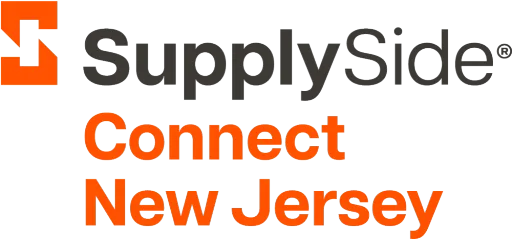Drinking Water, Plumbing, Pools, Wastewater FAQs
Drinking Water Treatment
What does NSF certification of home water treatment systems cover?
NSF certification of home water treatment systems covers four major areas:
- Structural integrity: Systems (and some components such as housings) intended for direct connection to a water service undergo pressure testing to confirm they won’t crack or leak when installed on a pressurized water line.
- Material safety: Certified systems (and components such as filter media and housings) undergo extraction testing to determine if they introduce any contaminants that could pose a health risk into the water. American National Standards limit the amount of contaminants that certified systems can introduce into the drinking water based on U.S. Environmental Protection Agency or Health Canada drinking water standards, whichever is stricter.
- Performance testing: NSF tests assembled systems to verify that the finished product is effective at reducing the contaminants claimed on the product label. Testing is done on a pass/fail basis.
- Label claims: NSF also verifies the accuracy of product packaging and labeling to confirm it does not contain any untrue or misleading statements, and that percentage reduction claims on product packaging match NSF’s official test results.
How can people reduce arsenic in drinking water?
Although no whole-house systems are currently NSF certified for the treatment of arsenic, point-of-use filters and systems that are certified for this purpose can be installed at the main drinking water source in a home, usually the kitchen sink.
The following filter types are NSF certified for reducing arsenic (pentavalent) for incoming levels of <=50 ppb:
You can also view all filters and systems certified by NSF to reduce arsenic to less than 50 ppb.
Are water treatment systems certified to reduce pharmaceutical drug residues?
Yes. The American National Standard NSF/ANSI 401: Emerging Contaminants and Incidental Compounds was developed in 2013. It established testing procedures to help verify the effectiveness of different types of water treatment systems to reduce up to 15 compounds like pharmaceuticals, over-the-counter drugs and new types of pesticides as well as chemicals used as flame retardants and detergents. A list of products that are currently NSF certified to meet this standard can be found on NSF’s drinking water listings page under the Reduction Claims section for this standard.
Emerging contaminants are a new category of water quality concerns for which evidence of health effects has not yet been established, but which consumers are concerned about.
How can consumers determine how much of each contaminant a water filter reduces?
Performance testing of home water treatment systems is done on a pass/fail basis. To earn certification for reduction of a specific contaminant, a product must be able to reduce that contaminant by the minimum amount shown in the applicable American National Standard. For example, to be certified for lead reduction under NSF/ANSI 53, a product must be able to reduce 150 ppb of lead to less than 5 ppb in the filtered water. For specific reductions achieved by an NSF certified system, contact the manufacturer to request its filter’s performance test data. This information may also be published on the manufacturer’s website or in the manual for the filter.
How can consumers reduce lead in drinking water?
Although no whole-house systems are currently NSF certified for treatment of lead, many certified point-of-use systems can be installed at the main drinking water source in a home, usually the kitchen sink. Systems NSF certified for lead reduction are verified to reduce 150 ppb of lead to less than 5 ppb in the treated water. These types of filters are certified by NSF to reduce lead in drinking water:
- Water pitchers with filters
- Faucet filters
- Under-sink filters
- Reverse osmosis filters
- Countertop (manual-fill) filters
- Countertop filters connected to a sink faucet
- Refrigerator filters
- Aftermarket refrigerator filters
- Integrated refrigerator filters
You can also view all filters and systems certified by NSF to reduce lead.
Are any water treatment systems certified to reduce uranium?
Currently, no systems are specifically NSF certified to reduce uranium. However, many reverse osmosis systems and salt-based water softeners are certified to reduce a by-product of decaying uranium known as radium 226/228. Systems certified for reduction of radium may also be effective at reducing uranium. To confirm how much uranium is being reduced with a specific system, consumers can have a sample of the treated water tested by a state-accredited laboratory. A list of water treatment systems NSF certified for radium 226/228 reduction can be found in NSF’s listings.
What are PFOA and PFOS and how can they be reduced in drinking water?
Perfluorooctanoic acid (PFOA) and perfluorooctanesulfonic (PFOS) acid are part of a group of chemicals referred to as perfluoroalkyl substances (PFASs) or perfluorinated compounds (PFCs). PFOA and PFOS are man-made chemicals that up until 2000 had been widely used in the manufacturing of many industrial and consumer products such as paper and cardboard food packaging, insecticides, electronics, stain repellants, paints, plumbing tape, firefighting foam and nonstick cooking surfaces. Systems NSF certified for reducing PFOA/PFOS can be found in NSF’s listings. NSF also maintains an informative web page to learn more about PFOA/PFOS.
If a product claims to use NSF certified components, is that the same as being NSF certified?
No. Component testing is generally limited to a review of a filter cartridge, housing or membrane for structural integrity or material safety or both. In general, no performance testing is conducted on components, but rather on finished systems (with, for example, a filter cartridge or membrane inside of a housing). Consumers concerned about a product’s contaminant reduction capability can contact the manufacturer to ask who tested the system for performance and then contact that organization to verify if the system was tested and certified to be effective against the contaminants it claims to reduce. A searchable database of NSF certified water treatment systems is available online.
Plumbing
Is PEX pipe suitable for potable water?
PEX tubing certified to NSF/ANSI/CAN 61 is considered to be suitable for drinking water applications. Certification for potable water contact is typically noted on the product by an NSF-61 or NSF-pw designation (for smaller fittings, the certification mark may be on the packaging only). Not all PEX pipe is intended for potable water contact. For example, certified pipes marked with only an NSF-rfh designation are intended for radiant floor heating applications and should not be used for drinking water contact.
Are plastic pipes suitable for drinking water use?
Plastic pipes that have been tested and certified to NSF/ANSI/CAN 61: Drinking Water System Components are considered suitable for potable water contact. Products that have been NSF certified to this standard bear one of the following certification marks: NSF-pw or NSF-61. A list of plastic plumbing products certified by NSF for both potable water and other engineering specifications can be found in NSF’s plumbing products listings, while products certified only for potable water contact can be found in NSF’s drinking water system components listings.
Does NSF test fluoride and other treatment chemicals for effectiveness?
In the late 1980s, the EPA requested that NSF work with public health and regulatory agencies to develop a standard for drinking water treatment chemicals to help limit the introduction of impurities from such products. The resulting NSF/ANSI/CAN 60: Drinking Water Treatment Chemicals American and Canadian National Standard does not address the effectiveness of water treatment products but establishes requirements that limit the potential introduction of impurities when a product is used up to a maximum usage rate. Product users are responsible for ensuring that the product is achieving the desired end result.
Pools
What is the best way to handle and store pool and spa water treatment chemicals?
For pools or spas only used seasonally, check the supply of water treatment chemicals before starting the pool opening process each year. Check the expiration dates on each product and replace any outdated chemicals. Be sure to read and follow the manufacturer’s instructions for each product and store chemicals in a cool, dry area out of the reach of children.
Are there alternatives to using chlorine to disinfect pool water?
There are several types of pool disinfection systems certified for compliance with the standard NSF/ANSI 50: Pool Equipment, including copper or copper/silver ionization systems, ozone generators and ultraviolet disinfection systems. Most system manufacturers still recommend that pool owners use a small amount of chlorine or bromine to help oxidize organic matter such as skin cells, oil and hair, and this is mandatory for commercial pools.
How can people avoid becoming entrapped in a pool or spa drain?
Consumers who own a pool should check to make sure that drain covers and grates meet current anti-entrapment standards set forth in the Pool and Spa Safety Act. Covers that meet these standards display ANSI/APSP 16 or ANSI/ASME A112.19.8 on the cover’s exterior. Make sure drain covers and grates are properly attached, and never allow anyone to use the pool or spa if a cover is broken or missing. When using a public pool, check for properly attached drain covers and instruct children to keep away from the drains.
Wastewater
Does NSF have any standards for grey water or water reuse?
NSF/ANSI 350 is an American National Standard that establishes minimum material, design, construction and performance requirements for onsite water reuse systems, including water quality requirements for the reduction of chemical and microbiological contaminants. The treated wastewater produced by certified systems is intended for non-potable water use. Subject to local regulatory approval, the treated water can typically be used for restricted indoor water use, such as toilet and urinal flushing, as well as unrestricted outdoor water use, such as lawn irrigation.
What is NSF/ANSI 40?
NSF/ANSI 40: Residential Wastewater Treatment Systems is an American National Standard that helps verify whether packaged residential wastewater treatment systems are able to effectively treat wastewater generated from an individual residence. These systems are like a miniature municipal treatment plant and are intended for use in areas where traditional septic systems cannot be used. The unique design and components of these systems accelerate the wastewater treatment process, and because the effluent produced is significantly superior to that of a traditional septic tank, there is typically greater flexibility when disposing the treated effluent.
What are composting toilets?
Composting toilets are a type of wastewater treatment system designed to use little or no water. They generally do not require hookup to a sewer or septic system and work by providing an enclosed environment that allows the natural process of aerobic decomposition to occur.
What is NSF/ANSI 41?
NSF/ANSI 41: Non-Liquid Saturated Treatment Systems is an American National Standard created to help ensure that composting toilets meet minimum design, construction and performance standards. Certification to this standard helps confirm that a system can handle the manufacturer’s stated capacity as well as produce compost that meets strict requirements for bacterial content.
How NSF Can Help You
Get in touch to find out how we can help you and your business thrive.

What’s New with NSF

GMP and Regulatory Compliance Virtual SupplySide Connect New Jersey Training
January 30, 2025
NSF Research Reveals Brits Demand Greater Clarity, Transparency and Standardisation in Food Labelling
January 8, 2025
Brooklands New Media’s Publication On NSF’s Global Animal Wellness Standards (GAWS) Not Endorsed by NSF
November 25, 2024